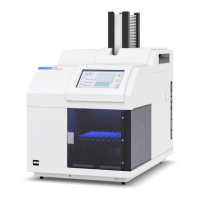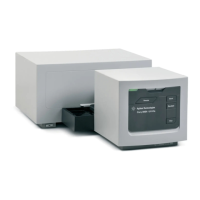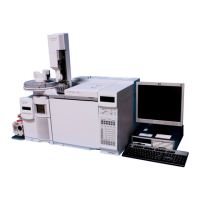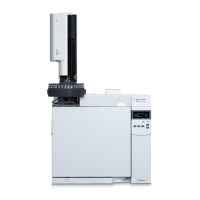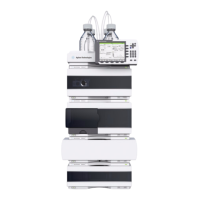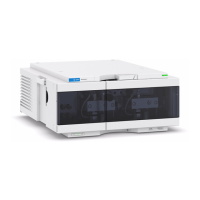7 Gas Selection and Plumbing
Supply tubing for most carrier and detector gases
50 Site Preparation Guide
• FID, FPD, and NPD detectors require a dedicated air supply. Operation may be affected by
pressure pulses in air lines shared with other devices.
• Flow- and pressure-controlling devices require at least
10 psi (138 kPa) pressure differential across them to operate properly. Set source
pressures and capacities high enough to ensure this.
• Situate auxiliary pressure regulators close to the GC inlet fittings. This ensures that the
supply pressure is measured at the instrument (rather than at the source); pressure at the
source may be different if the gas supply lines are long or narrow.
• Never use liquid thread sealer to connect fittings.
• Never use chlorinated solvents to clean tubing or fittings.
See “Installation Kits” on page 14 for more information.
Supply tubing for most carrier and detector gases
Use only preconditioned copper tubing (part number 5180-4196) to supply gases to the
instrument. Do not use ordinary copper tubing—it contains oils and contaminants.
Do not use methylene chloride or other halogenated solvent to clean tubing that will be used
with an electron capture detector. They will cause elevated baselines and detector noise until
they are completely flushed out of the system.
Do not use plastic tubing for suppling detector and inlet gases to the GC. It is permeable to
oxygen and other contaminants that can damage columns and detectors.
Plastic tubing can melt if near hot exhaust or components.
The tubing diameter depends on the distance between the supply gas and the GC and the total
flow rate for the particular gas. Tubing of 1/8-in diameter is adequate when the supply line is
less than 15 feet (4.6 m) long.
Use larger diameter tubing (1/4-inch) for distances greater then 15 feet (4.6 m) or when
multiple instruments are connected to the same source. Use larger diameter tubing if high
demand is anticipated (for example, air for an FID).
Be generous when cutting tubing for local supply lines—a coil of flexible tubing between the
supply and the instrument lets you move the GC without moving the gas supply. Take this
extra length into account when choosing the tubing diameter.
Supply tubing for hydrogen gas
Agilent recommends using new chromatographic quality stainless steel tubing and fittings
when using hydrogen.
• Do not re-use old tubing when installing or switching to hydrogen supply lines for carrier
gas or the JetClean ion source system. Hydrogen gas tends to remove contaminants left
on old tubing by previous gases (by helium, for example). These contaminants can appear
in output as high background noise or hydrocarbon contamination for several weeks.
• Especially do not use old copper tubing, which can become brittle.

